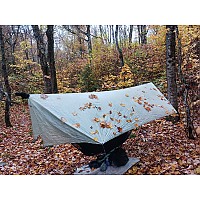Optimus No.96 kerosene stove

The classic "Half-Pint Primus"—small, hot, indestructible.
A five-star product, for careful users.
Pros
- Fantastic brass build quality
- Spares easily available
- Stable, with careful placement
- Reliable, with basic maintenance
- Less volatile fuel, than some alternatives
- Much less waste, of resources, than many competing products
Cons
- Two types of fuel required
- Not for beginners
- -or children
- Windbreak would be required
One of the oldest of the Swedish stove designs, the small version was a staple in the European outdoors community for decades, using the less volatile Kerosene/Paraffin, rather than Gasoline/Petrol. Usually packaged in a tin, the 96 was sometimes carried by 1950s/60s cyclists, by use of a frame clip attached at the top of the seat tube.
The brass construction of these stoves is high quality and consumable parts are still easy to acquire, although the model has not been in production, since 1969 (after 58 years!)
Like many legacy designs, the 96 requires some assembly before use, attaching the burner to the fuel tank and tightening the joint with a small wrench/spanner. The tank incorporates fold-out legs and is generally easy to position and stable in use. Three pot supports attach to the sides of the fuel tank. I wouldn't normally use a pot of more than six inches in diameter, but larger cooking pans can be employed, with care. I've cooked a lot of breakfasts for campers with temperamental alternative types over the years.
A priming fuel is needed to heat the vapourising tube and enable efficient combustion of the Kerosene. I carry a small tin of Methylated spirit for this purpose. It's a little tiresome having to carry two types of fuel, but part of the experience of using a vintage product.
I never put a stopwatch on my stoves. I tend to put on a pot of water before pitching my tent or otherwise preparing my shelter. The half-pint burns hot and takes a similar amount of time to produce water for a drink as other liquid fuel pressure stoves—around five minutes.
Simmering is quite possible, with careful attention to the amount of pressure in the stove, regulated with the pump and release valve. Slightly more fiddly than a Svea, for example, but a knack quickly mastered.
I have taught a large number of beginners how to safely use liquid fuel stoves. The key is to allow the priming fuel to do its job and not be in too much of a hurry to pump the emerging kerosene flame into a useable size. Many tents—and eyebrows—have been incinerated by overconfident or impatient users.
I tended to take my 96 on solo backpacking and cycling trips. For group activities, the larger 00 stove (Optimus No. 00 Reviews - Trailspace) was preferred with its pint capacity tank. I generally packed a foldable steel and aluminium screen, because the design is susceptible to wind—either extinguishing the flame, or increasing the fuel consumption, excessively. Makeshift windscreens are easy to fashion in many situations, but not something I enjoy after a day of strenuous effort.
Kerosene is no longer a ubiquitous fuel as it was in my childhood days, but still popular for horticultural purposes, in the UK. A half pint tank should be sufficient for any day hikes and many frugal weekenders, but the user really should carry any spare fuel they think they might need, as re-supply can be an issue. There are no wasteful gas canisters to dispose of, of course, but you should take care to protect clothing from contamination by either Meths or Kerosene.
Decent washers, pump leather, and gaskets usually suffice, but a plastic bag makes a featherlight addition to add a little security. Some basic maintenance is required. Washers and gaskets wear out. The jet can be blocked, by dirt in the fuel or on the stove. It's not a complex nor temperamental design but some basic tuition helps.

Background
As a kid, starting out, I saw a lot of the cycle tourists, climbers, and hikers using half pint Primuses (the names changed, and other manufacturers made similar products). It seemed very mysterious and slightly dangerous, to a ten-year-old Cub Scout. The design still looks bomb proof and sustainable a half century later, although the operation is second nature and I try to explain the lore, to folk that ask.
Source: bought it used
Price Paid: £10

 Reviewed by
Reviewed by


